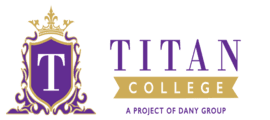What Are Support And Locomotion/ Movement? Let’s Break It Down. Support is necessary to uphold against gravity and to locomote from one place to another.
And this support is found in the form of bones, muscles, tendons, ligaments, and cartilage.
All these frameworks help us to move and stand on our own.
To understand the complexities of our biology, we first need to understand these above-mentioned terms.
Bones- Function And Structure
An individual bone is composed of a variety of tissues.
The terminal broad parts are called epiphysis and the middle part along the length is called diaphysis or shaft.
This part contains a cavity filled with yellow bone marrow.
The outer connective tissue around the bone is called the periosteum and the inner region is called the endosteum.
The endosteum’s outer part is called compact bone, which is a strong and hard area.
While the inner part consists of spongy bone. Where the red bone marrow is present
There are three types of cells that are associated with the bones.
Osteoblasts These cells are bone-forming cells that synthesize and secrete unmineralized ground substances.
Once these osteoblasts enter the matrix- bone marrow, they become osteocytes.
Osteocytes maintain healthy bone tissue by secreting enzymes.
They also regulate calcium release from bone tissue to blood.
Osteoclasts are bone-destroying cells that perform bone resorption meaning they break down the bones and deposit phosphate and calcium in the blood.
These cells are important to the growth and repair of bones.
Muscles- Function And Structure
These are specialized tissues that can undergo contraction and relaxation in order to provide movement.
They also function to uphold body parts.
There are three types of muscles.
- Smooth muscles: These muscles are controlled involuntarily and have no striations present on them. These muscles are uni-nucleated meaning they have one nucleus per cell. They are appeared to be spindle-shaped and are found in the bladder, kidney, etc.
- Cardiac muscles: These muscles are controlled involuntarily as well and are present around the heart. They appear to be striated and uni-nucleated. Adjacent cells join together to form branching fibers by cell-to-cell attachments. They have a gap between attachments and their pattern of branching is called “intercalated discs”.
- Skeletal muscles: These muscles are controlled voluntarily as they are attached to the bones and help in locomotion and movement. These are multi-nucleated meaning they contain a large number of nuclei per cell. Their appearance is striated.
Tendons
Tendons are a type of muscle that attaches muscle to muscle.
Ligaments
Ligaments are a type of muscle that attaches muscle to bones and are present in our finger joints.
Cartilage
Cartilage is not as strong as bone but is fairly tough.
It is highly flexible as it contains many collagenous and elastic fibers.
The cartilage is covered by a dense layer of collagen fibers called perichondrium.
Inside the cartilage, there is a fluid-like structure called a matrix.
There are many small cavities distributed in the matrix called lacunae which contain cartilage cells, called chondrocytes.
What Are Support And Locomotion/Movement? Let’s Break It Down. Cartilage does not contain blood vessels meaning the chondrocytes are transported through diffusion.
Because of this, if the cartilage gets damaged, it heals very slowly.
There are three types of cartilage.
- Hyaline cartilage is found at the ends of long bones and the nose, larynx, and trachea.
- Fibrocartilage contains wide rows of thick collagenous fibers and is found in the discs located in vertebrae.
- Elastic cartilage is found in the earflaps and epiglottis.



Leave A Comment